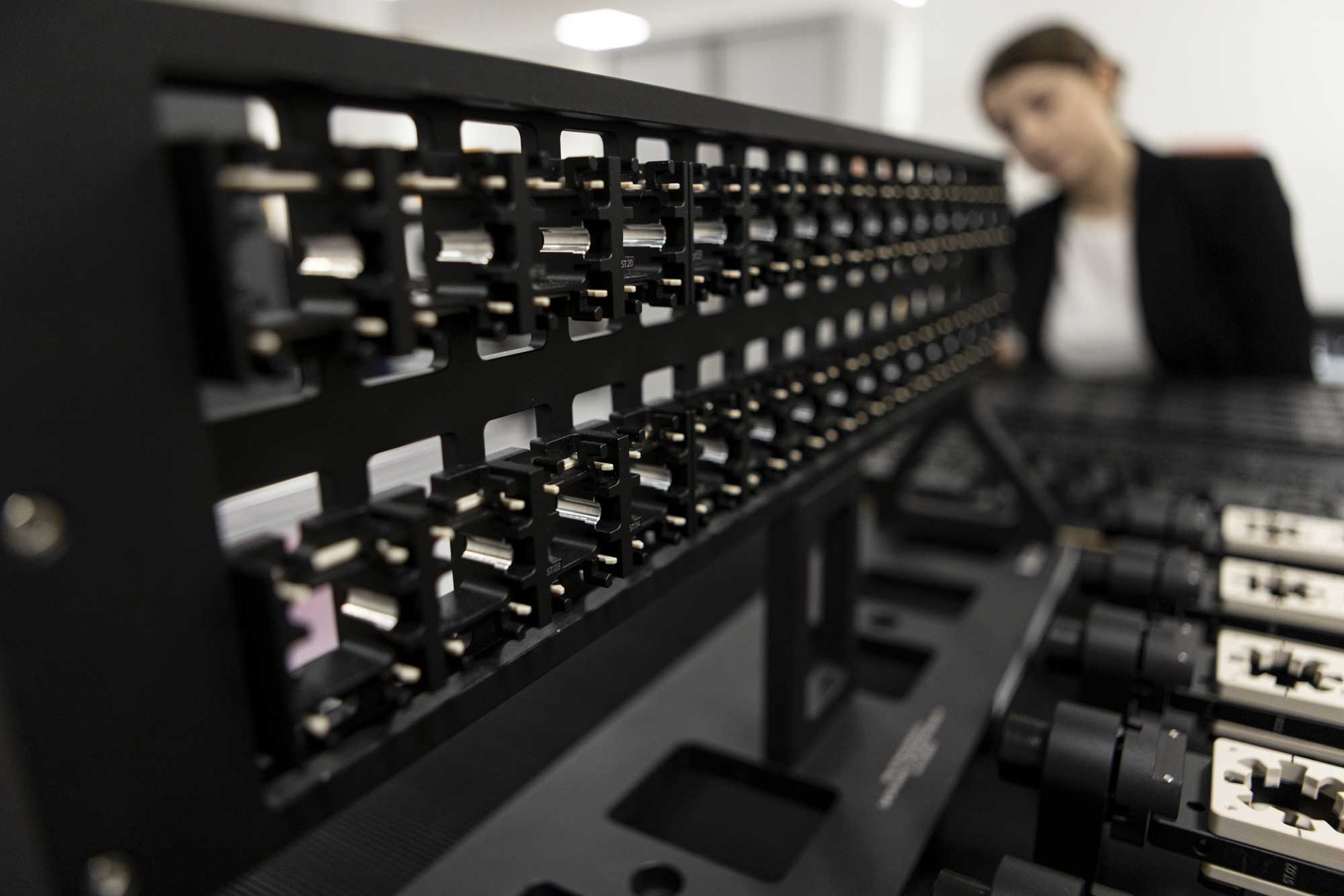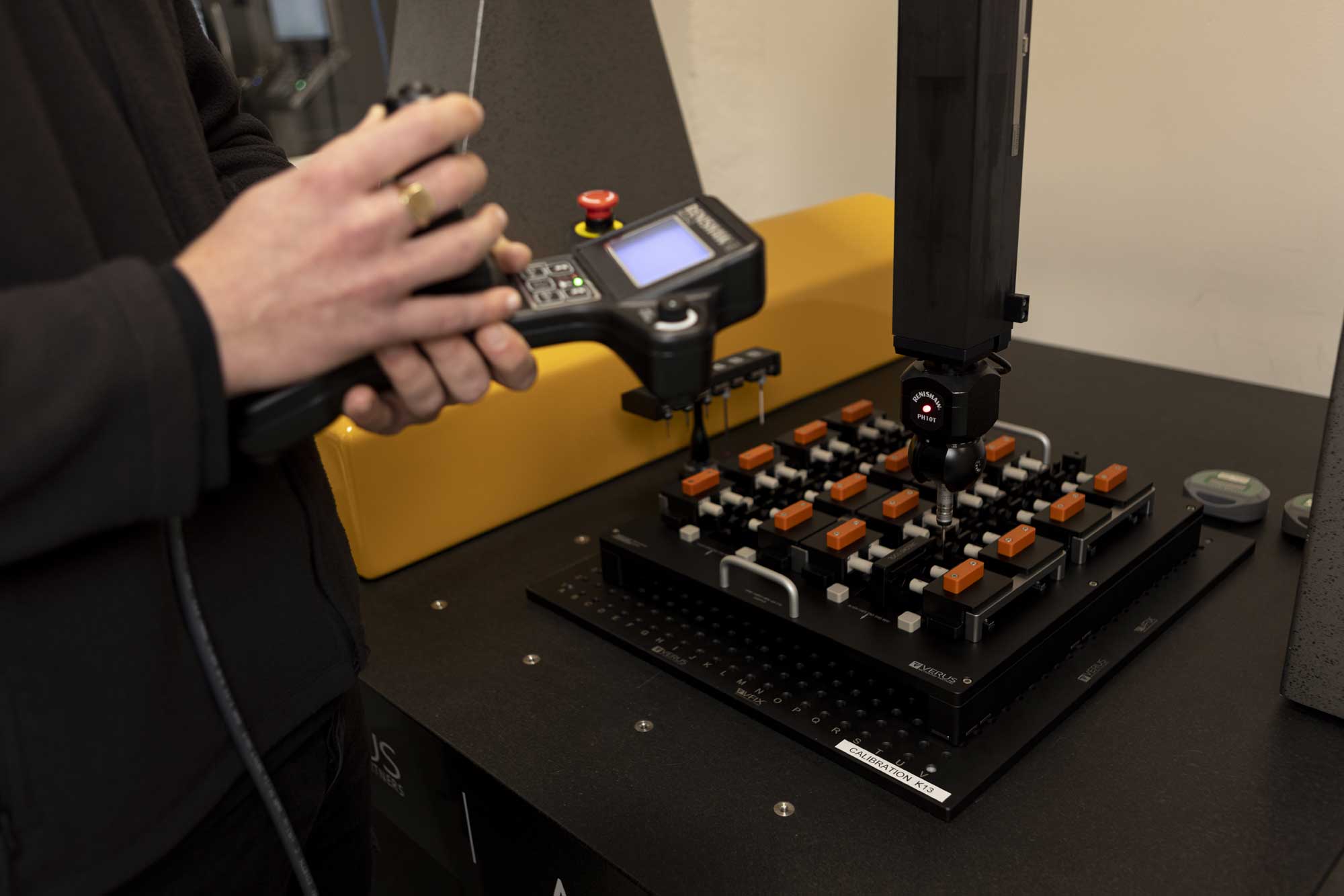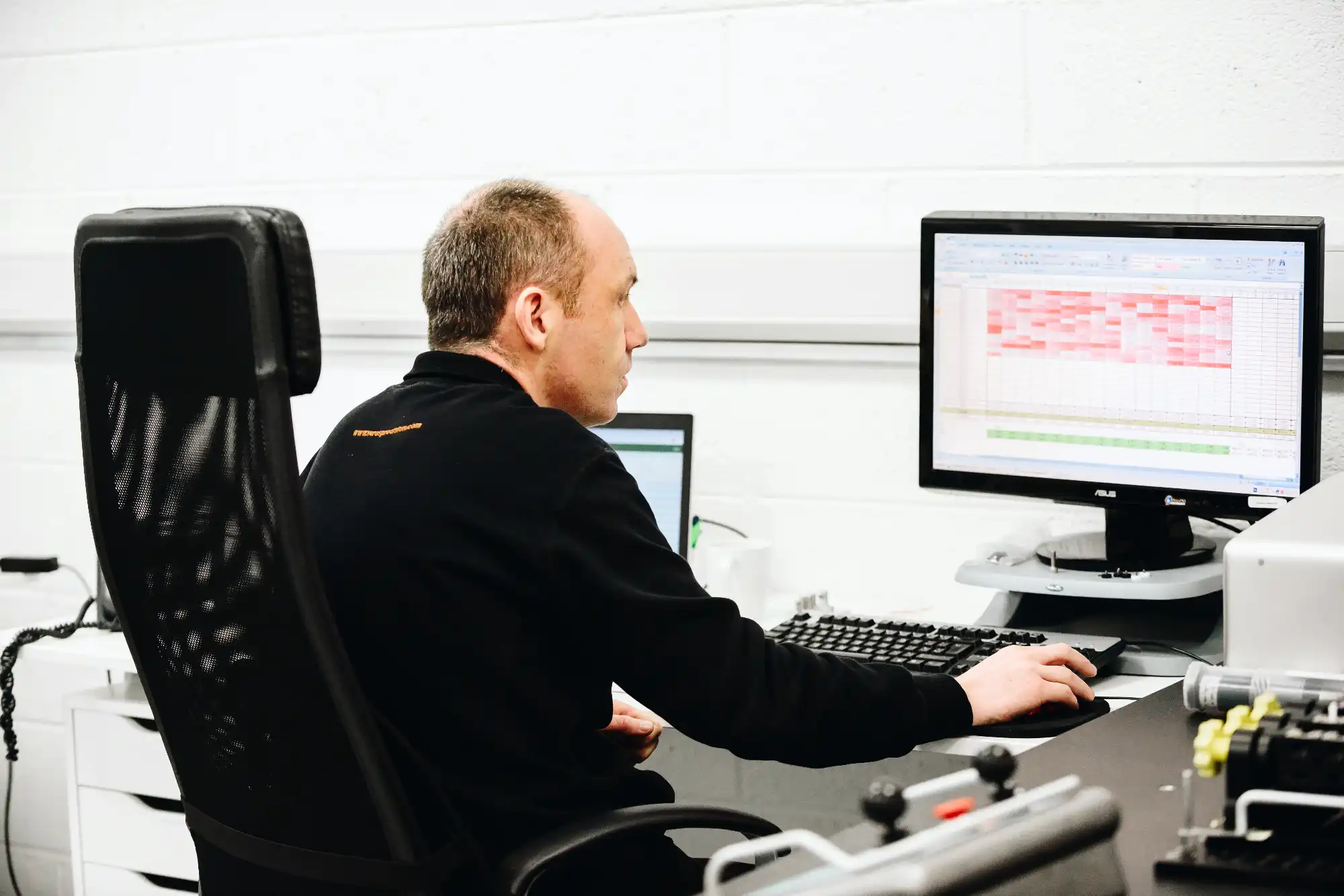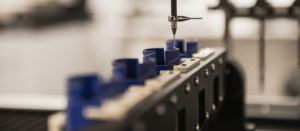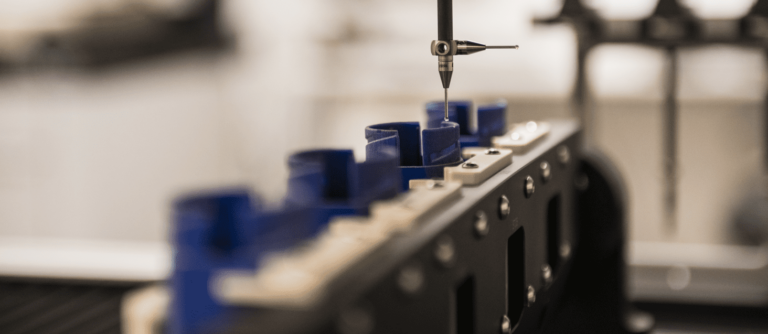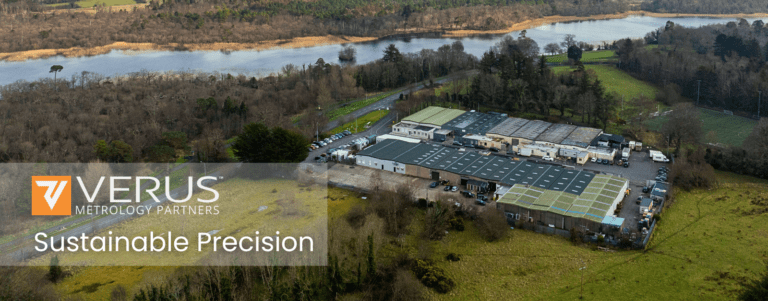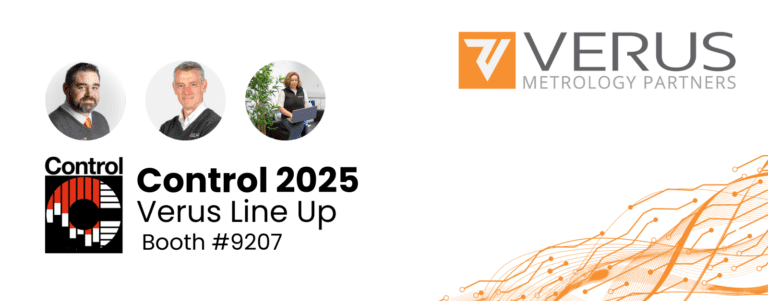Metrology fixtures serve as the cornerstone in the world of precision manufacturing, playing an essential role in the accuracy and consistency of dimensional measurements. These tools, crucial for quality control and ensuring products meet their design specifications, require a sophisticated blend of engineering insight and manufacturing prowess to create. This guide aims to explore the fundamental aspects of metrology fixture design and manufacturing. It will navigate through the technical intricacies involved in creating these vital components, focusing on the principles that guide their development and the impact they have on the manufacturing process. By understanding these elements, manufacturers can better appreciate the value of meticulously designed and crafted metrology fixtures in achieving unparalleled precision in their operations.
Understanding Metrology Fixture Design
Metrology fixture design is a nuanced field that directly influences the precision and efficiency of manufacturing processes. These fixtures are not mere holding devices; they are integral to ensuring that each measurement taken during production is both accurate and repeatable. The design of metrology fixtures, therefore, requires a deep understanding of mechanical principles, material science, and the specific needs of the measurement process.
Core Principles of Fixture Design
- Precision and Stability: The primary aim is to achieve the highest level of measurement accuracy. This necessitates designs that eliminate any potential for movement or instability during the measurement process.
- Material Selection: The choice of materials impacts not only the durability of the fixture but also its compatibility with the parts being measured. Considerations include minimizing the risk of damage to the part and ensuring the fixture’s longevity.
- Accessibility and Efficiency: Good design facilitates easy access to the part for measurement while also considering the efficiency of the measurement process. This includes considerations for quick loading and unloading of parts and the ability to measure multiple features without repositioning.
Technical Considerations in the Design Process
The design process begins with a thorough analysis of the parts to be measured, including their geometry, the materials they are made from, and the critical dimensions that need to be measured. Designers use advanced CAD software to develop 3D models of the fixtures, allowing for precise planning and visualization of how the fixture will interact with both the part and the measurement system. Simulation tools can further optimize the design, testing for potential issues before manufacturing begins.
Collaboration and Customization
A key aspect of successful fixture design is close collaboration with clients. This partnership ensures that the fixture is not only technically sound but also tailored to fit seamlessly into the client’s existing measurement and manufacturing workflows. Customization is often necessary to accommodate unique parts or specific measurement challenges, making each fixture design a bespoke solution.
Metrology fixture design is a critical step in the manufacturing process, requiring a balance of technical skill, innovative thinking, and collaborative planning. By adhering to core principles and embracing the challenges of customization, the design of metrology fixtures can significantly enhance the precision, efficiency, and reliability of manufacturing operations.
The Manufacturing Process of Metrology Fixtures
After the meticulous design phase, metrology fixture manufacturing begins. This stage transforms conceptual designs into tangible tools essential for precise measurement. The process involves a series of technical steps, each critical to ensuring the final product meets the exact specifications and quality standards required for effective metrology.
From Design to Production: A Technical Overview
- CNC Machining: This is often the first step in the manufacturing process, where computer-controlled machining tools carve, drill, and shape raw materials into the precise dimensions dictated by the fixture’s design. CNC machining is prized for its accuracy, consistency, and flexibility in working with a variety of materials.
- Quality Control Measures: Throughout the manufacturing process, rigorous quality control is paramount. This involves dimensional checks, material inspections, and stability tests to ensure the fixture will perform as intended in its operational environment. Advanced metrological equipment, such as coordinate measuring machines (CMMs), may be used to verify the accuracy of the fixture against the original CAD model.
Material Considerations and Finishing Touches
Selecting the right materials is crucial for the fixture’s functionality and longevity. Factors such as the manufacturing environment, the properties of the parts being measured, and the type of measurement systems being used all influence material selection. After the primary manufacturing steps, fixtures often undergo various finishing processes—such as anodizing, powder coating, or laser engraving—to enhance durability, improve aesthetics, or add functional markings.
Ensuring Compatibility and Performance
The ultimate goal of the manufacturing process is to produce a fixture that not only meets the dimensional specifications but also performs flawlessly in its intended measurement application. This means ensuring compatibility with the measurement system and adaptability to the parts it will hold. Final testing often simulates, through Gage R&R actual measurement scenarios to confirm the fixture’s performance, addressing any discrepancies before delivery to the client.
The manufacturing of metrology fixtures is a complex process that requires precision, attention to detail, and a deep understanding of both the materials being used and the end application of the fixture. Through advanced manufacturing techniques and stringent quality control, each fixture is crafted to provide reliable, accurate, and efficient measurement capabilities, underscoring the vital role these tools play in the broader manufacturing landscape.
Why Design and Manufacturing Quality Matters
The intricacies of metrology fixture design and manufacturing underscore a critical truth: the quality of these processes has a direct and profound impact on the precision and reliability of manufacturing measurements. In high-stakes industries where the minutest discrepancies can lead to significant ramifications, the role of metrology fixtures becomes even more pivotal. This section explores the tangible benefits of high-quality design and manufacturing in metrology fixtures.
Direct Impact on Measurement Accuracy
The primary purpose of a metrology fixture is to secure the part in a defined orientation and position for accurate measurement. Any deviation in the fixture’s design or a flaw in its manufacturing can introduce variability into the measurement process. High-quality fixtures ensure consistent positioning and stability, reducing measurement uncertainty and enhancing the reliability of the data collected.
Influence on Manufacturing Efficiency and Cost
Well-designed and meticulously manufactured metrology fixtures streamline the measurement process, significantly reducing setup times and enabling faster throughput without sacrificing accuracy. This efficiency can substantially lower operational costs by minimizing the time spent on measurement and reducing the likelihood of errors that require rework or result in scrap. Over time, these savings can be substantial, highlighting the economic value of investing in quality fixture design and manufacturing. You can read more on this page to learn more about how metrology can impact profitability.
Longevity and Durability of Fixtures
The choice of materials and precision in manufacturing not only affect the fixture’s performance but also its durability. Fixtures subjected to daily use in harsh manufacturing environments must withstand wear and tear without degrading in performance. High-quality fixtures, designed with the end-use environment in mind and manufactured to exacting standards, offer greater longevity, reducing the need for frequent replacements and ensuring consistent measurement accuracy over time.
Compliance with Industry Standards
In regulated industries, measurement accuracy isn’t just a matter of quality but of compliance. Metrology fixtures that are designed and manufactured to meet specific industry standards help ensure that products comply with regulatory requirements. This compliance is crucial for companies operating in sectors like aerospace, automotive, and medical devices, where non-conformance can lead to regulatory action, product recalls, and reputational damage.
In essence, the quality of metrology fixture design and manufacturing is foundational to maintaining the integrity of the manufacturing process. It affects not just the accuracy of measurements but the overall efficiency, cost-effectiveness, and regulatory compliance of the manufacturing operation. Investing in high-quality metrology fixtures is, therefore, an investment in the future success and sustainability of the manufacturing enterprise.
Choosing the Right Metrology Fixture Partner
Selecting a partner for metrology fixture design and manufacturing is a critical decision for any manufacturing operation focused on precision and quality. The right partner brings not only technical expertise but also a collaborative approach to address specific measurement challenges. Here are key factors to consider in this selection process:
Technical Expertise and Experience
- Look for a provider with a proven track record in your industry or with similar technical challenges. Depth of experience often translates into a deeper understanding of specific measurement intricacies and regulatory requirements.
- Assess the technical qualifications of their team. Engineers and designers with certifications or specialized training in metrology, CAD/CAM software, and fixture design principles are likely to produce higher quality outcomes.
Manufacturing Capabilities
- Evaluate the range of manufacturing technologies and processes the partner uses. Advanced manufacturing capabilities, such as precision CNC machining and additive manufacturing, indicate a capacity to produce complex and high-quality fixtures.
- Inquire about the quality control measures in place throughout the manufacturing process. ISO certifications or adherence to other industry standards can be indicators of a consistent commitment to quality.
Customization and Collaboration
- The ability to customize fixtures to meet specific measurement requirements is crucial. A partner should be willing to collaborate closely with your team, from initial concept through design refinement and final production.
- Consider the provider’s approach to project management and communication. Regular updates and transparent collaboration processes ensure that the project aligns with your expectations and timelines.
After-Sales Support and Service
- Comprehensive after-sales support, including training on fixture use and maintenance, troubleshooting, and recalibration services, can significantly enhance the value of your investment.
- Understand the warranty and service agreements to ensure they meet your operational needs and protect your investment over time.
Evaluating Potential Partners
- Request case studies or examples of past projects, especially those that are similar to your measurement challenges. Real-world applications can provide insights into the provider’s capability and approach to problem-solving.
- Consider conducting a pilot project or requesting a prototype to assess the partner’s capability and the fixture’s performance in your specific application.
In making a selection, it’s crucial to look beyond the immediate costs and consider the long-term benefits of accurate measurements, manufacturing efficiency, and product quality. The right metrology fixture partner should act as an extension of your team, bringing expertise, innovation, and reliability to your manufacturing process.
Long-term Relationship and Adaptability
- Strategic Partnership: A good partner views the relationship as a long-term strategic partnership, not just a transaction. This perspective ensures a commitment to your success and adaptability to your evolving needs.
- Innovation and Continuous Improvement: Choose a partner that invests in research and development, continually improving their processes and exploring new technologies. This commitment to innovation can provide you with competitive advantages by leveraging the latest advancements in metrology fixture design and manufacturing. You can read more on trends and innovations for 2024, here.
Making the Decision
Selecting the right metrology fixture partner is a decision that impacts the accuracy of your manufacturing measurements, the efficiency of your production processes, and ultimately, the success of your products in the market. By focusing on technical expertise, manufacturing capabilities, customization, collaboration, and after-sales support, you can identify a partner that aligns with your quality standards and business goals.
Remember, the goal is to find a partner who understands the critical role of precision measurement in manufacturing and is equipped to help you meet those challenges head-on. By taking a thorough and informed approach to this selection process, you ensure that your manufacturing operations are supported by fixtures designed and manufactured to the highest standards of quality and reliability.
The process of choosing a metrology fixture partner should be guided by a clear understanding of your measurement needs, a careful evaluation of potential partners’ capabilities and track records, and a commitment to establishing a productive, long-term relationship. This strategic choice not only addresses your current measurement challenges but also positions your manufacturing operations for future success and innovation.
Invitation to Explore Verus Metrology’s Solutions
The design and manufacturing of metrology fixtures are critical components in the precision manufacturing ecosystem. This guide has explored the foundational elements of metrology fixture design and manufacturing, highlighting the importance of precision, quality, and collaboration in creating these essential tools.
Quality design and manufacturing practices are indispensable for ensuring measurement accuracy, operational efficiency, and compliance with industry standards. The selection of a metrology fixture partner, therefore, should be informed by an in-depth evaluation of their technical expertise, manufacturing capabilities, and commitment to collaboration and innovation.
In the dynamic landscape of manufacturing, where precision and reliability are paramount, the right metrology fixtures can significantly impact product quality and manufacturing efficiency. Manufacturers are encouraged to prioritize these aspects in their selection process, ensuring their operations are equipped with fixtures that meet the highest standards of accuracy and durability.
As the manufacturing sector continues to evolve, driven by technological advancements and increasing quality standards, the role of metrology fixtures will only grow in importance. By investing in high-quality design and manufacturing practices today, manufacturers can position themselves for success in the competitive markets of tomorrow.
In closing, the journey to selecting the right metrology fixture design and manufacturing partner is a strategic investment in your manufacturing process’s future. It is an opportunity to enhance the precision, efficiency, and quality of your operations, laying the foundation for sustained success in an increasingly complex and demanding manufacturing environment.

